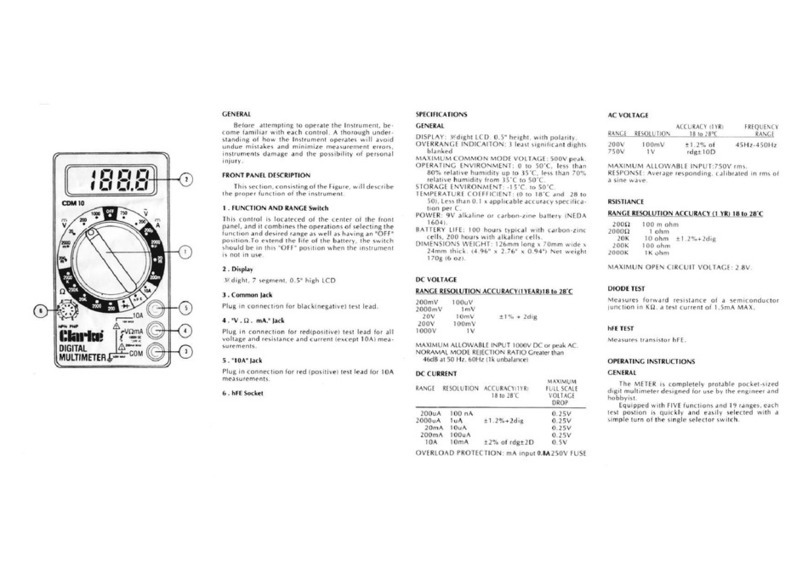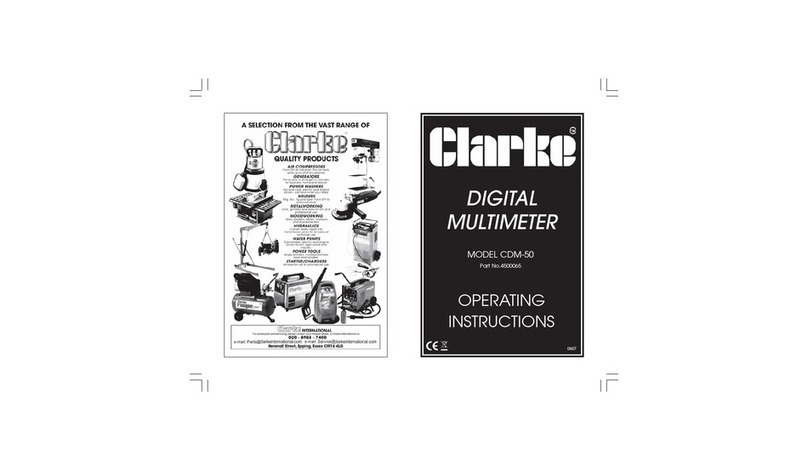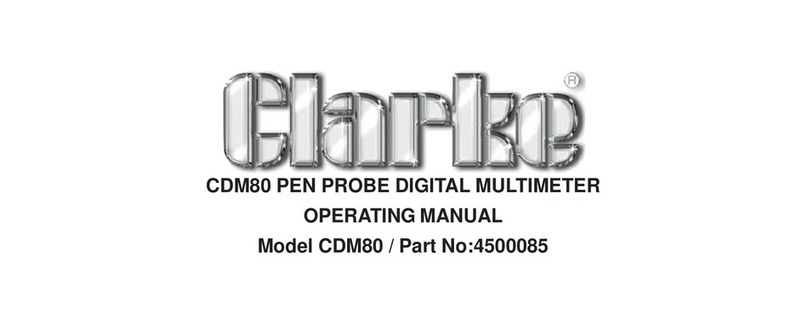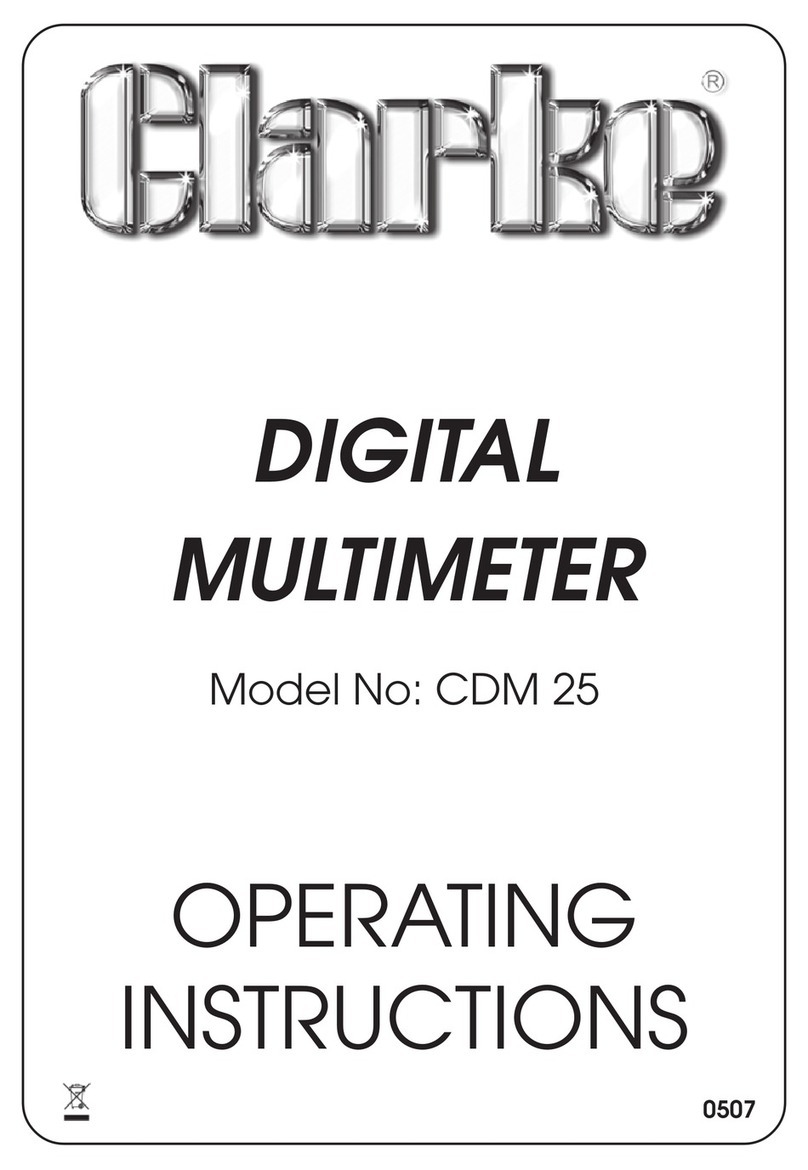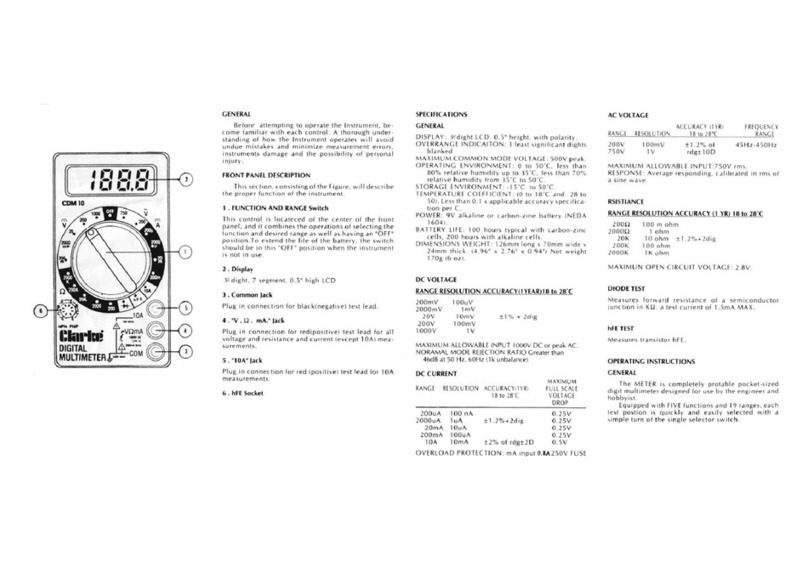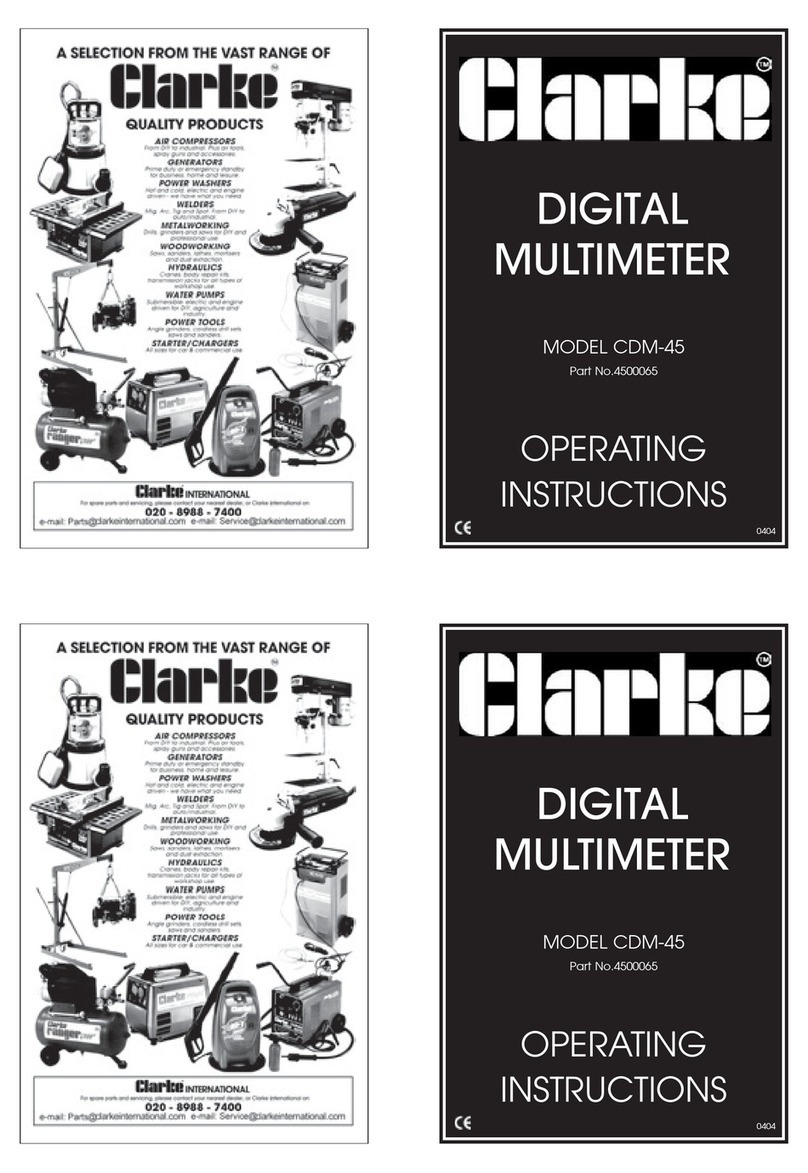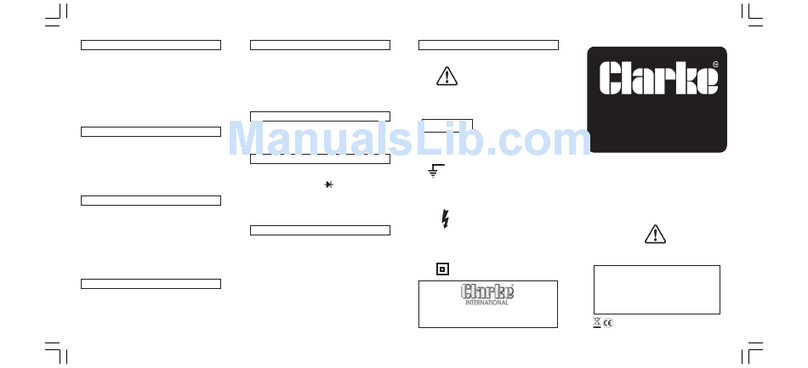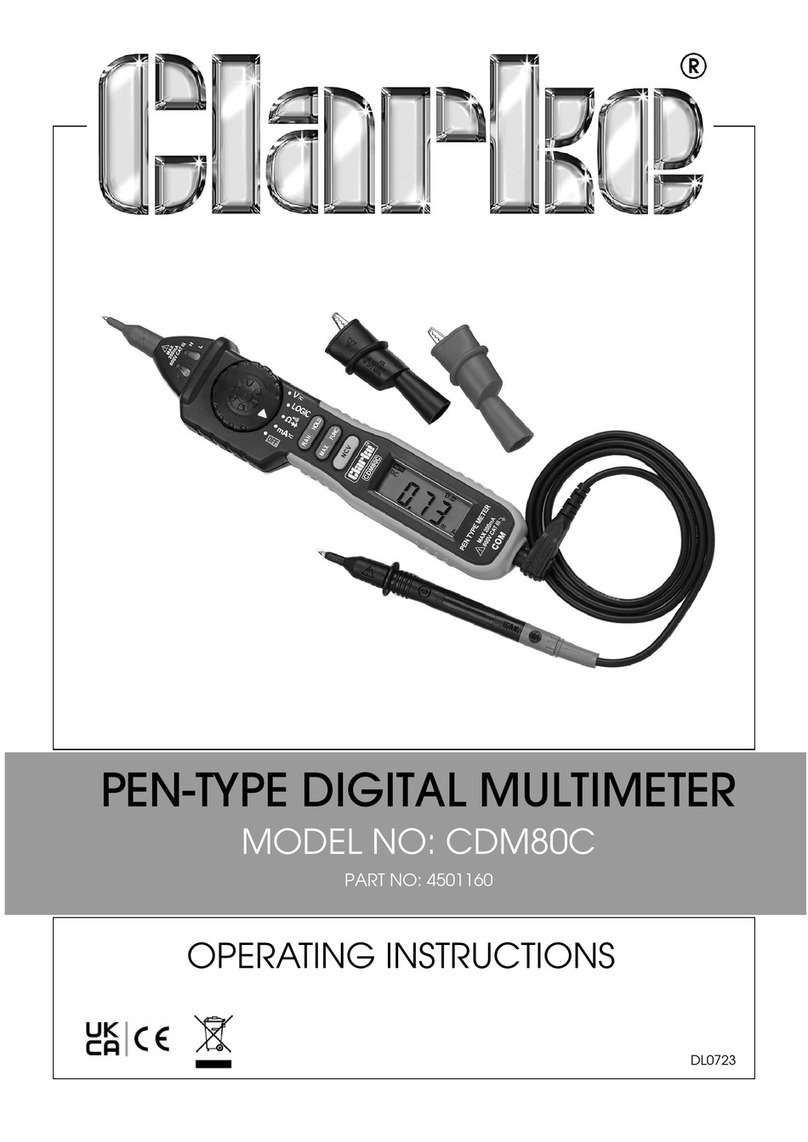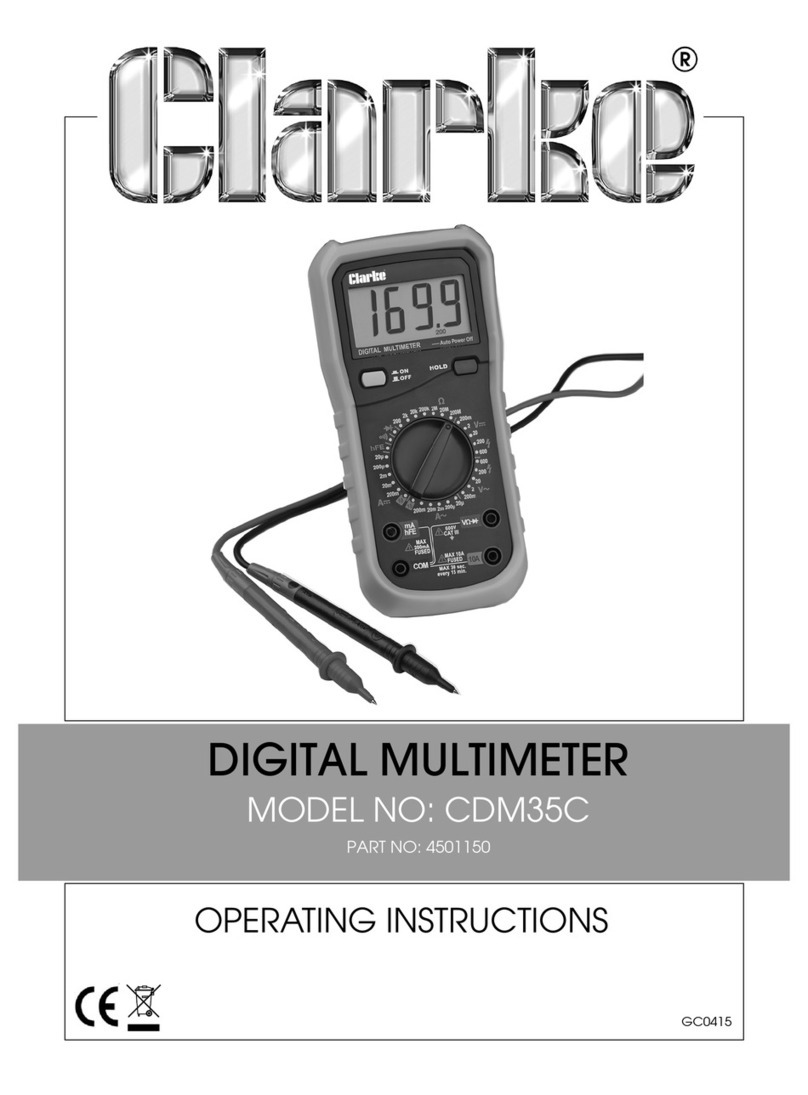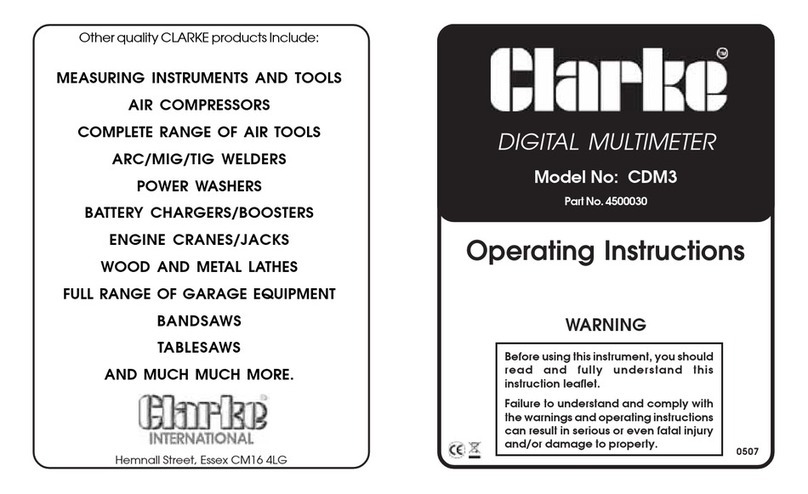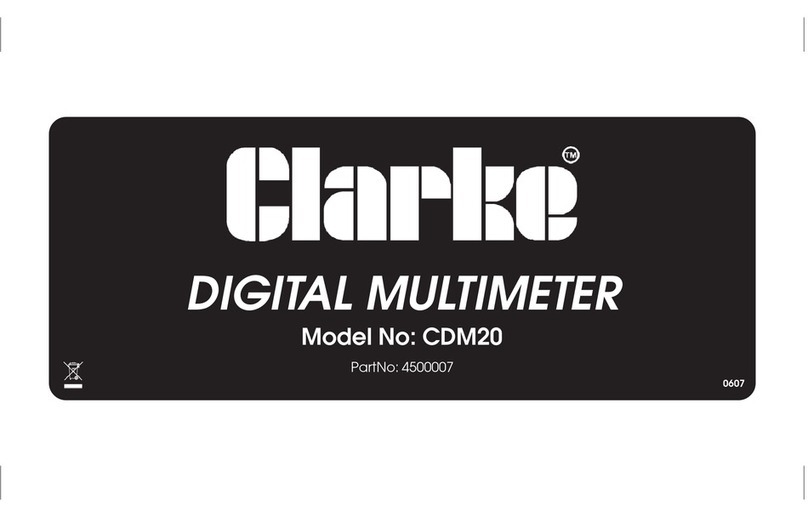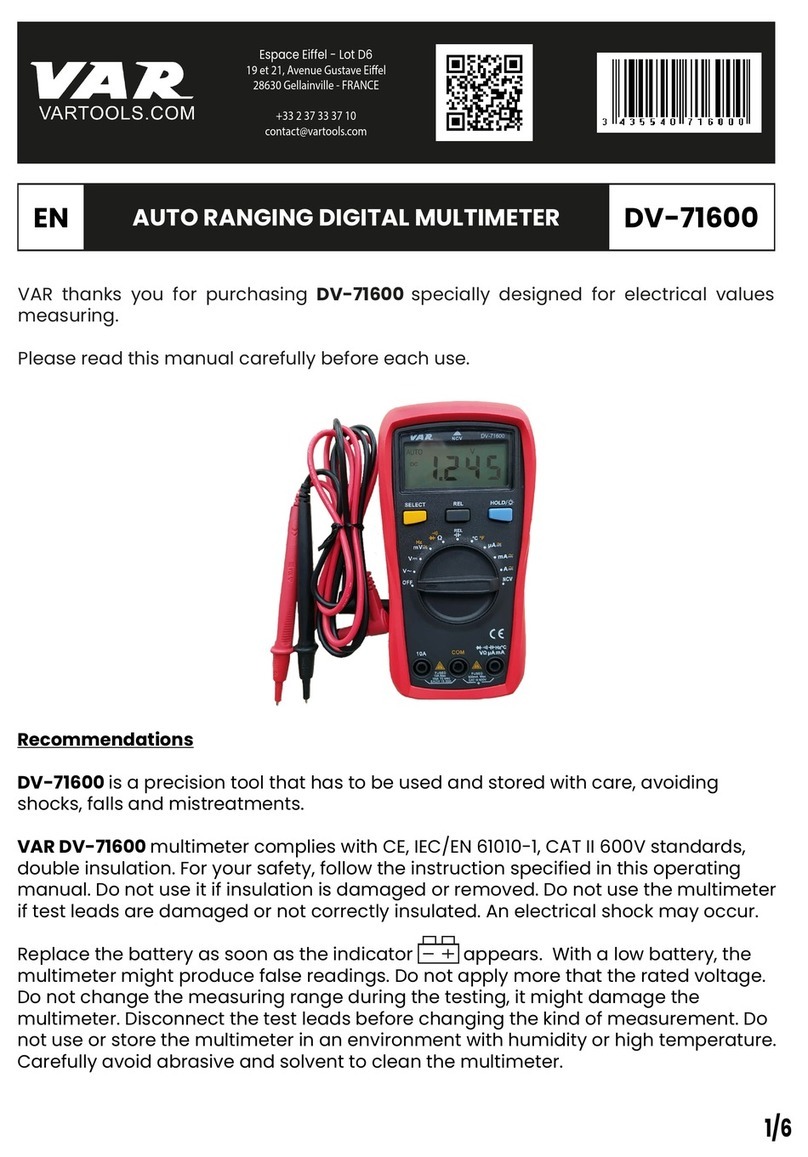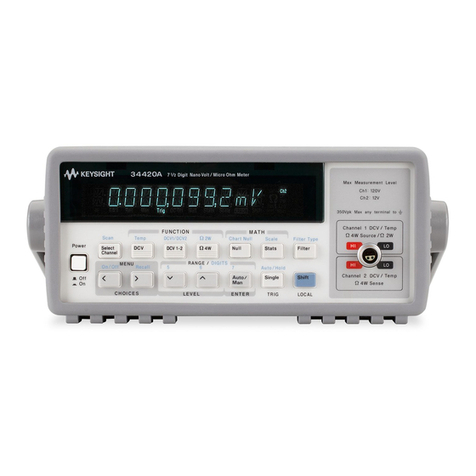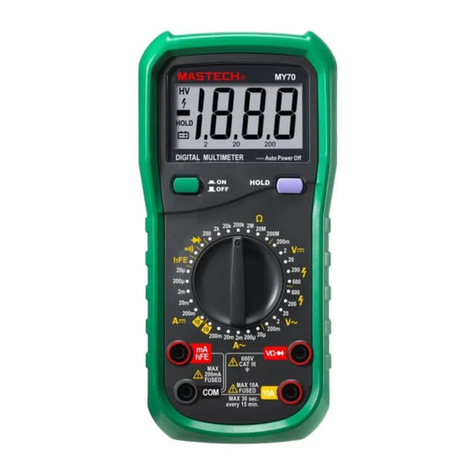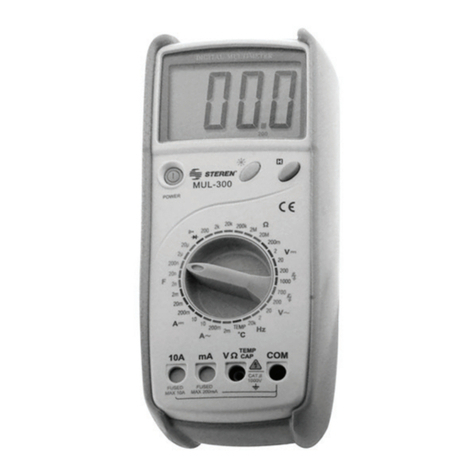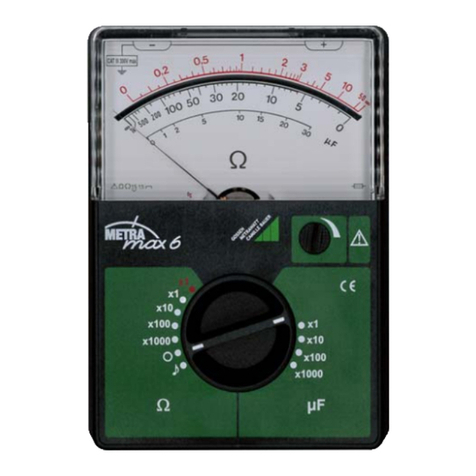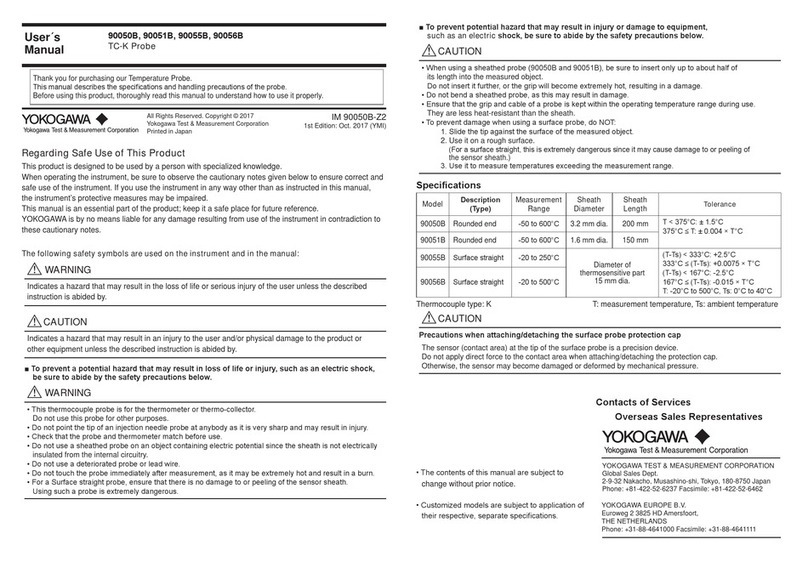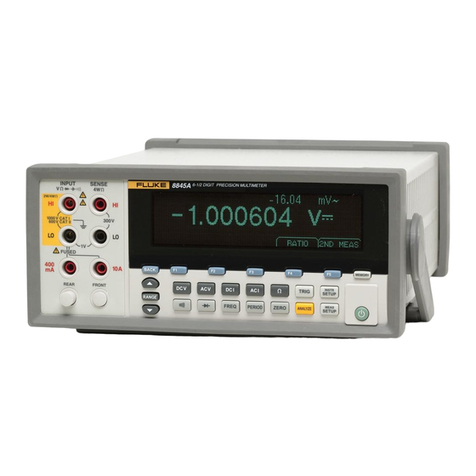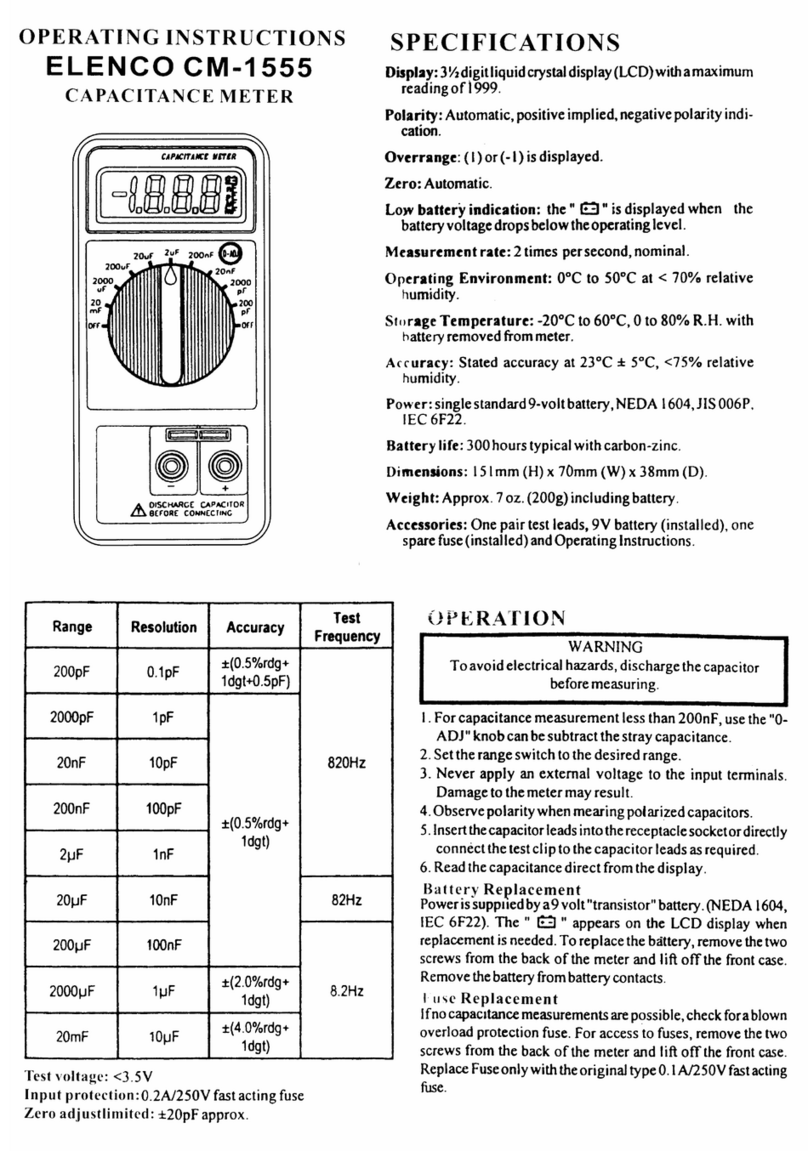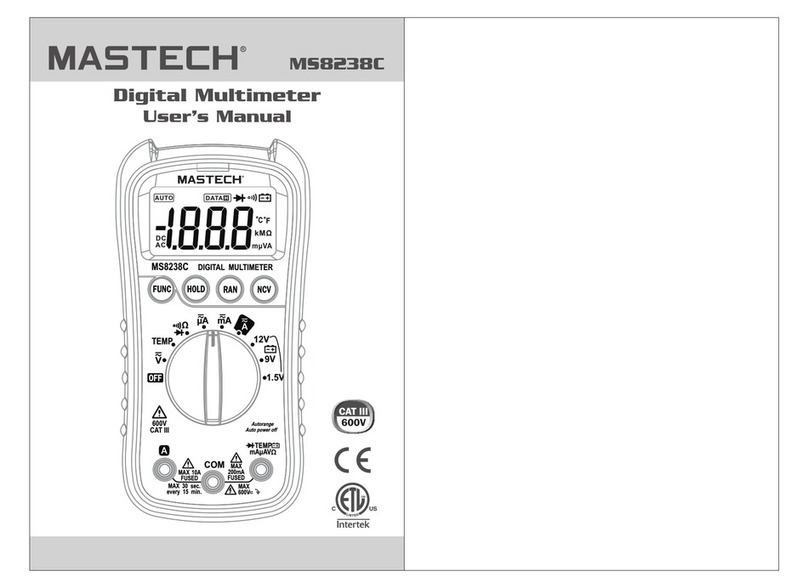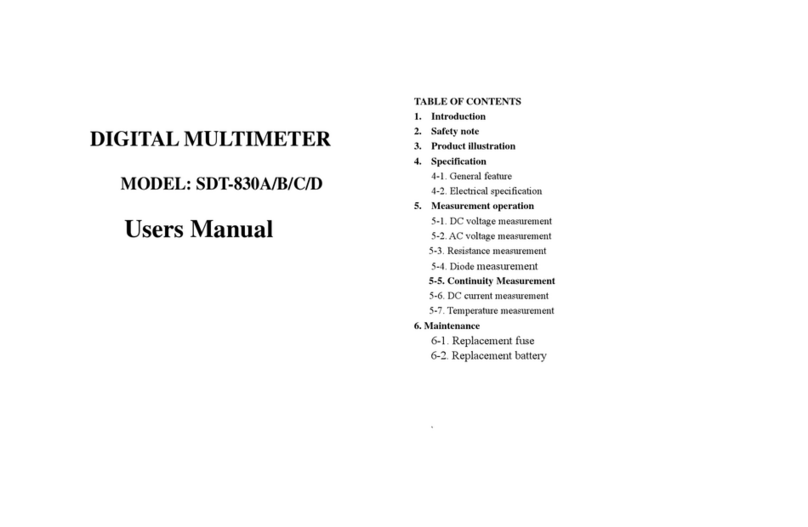3
WARNING
To avoid possible electric shock or personal injury, follow these
guidelines:
• Do not use the meter if it is damaged. Before you use the meter,
inspect the case. Pay particular attention to the insulation
surrounding the connectors.
• Inspect the test leads for damaged insulation or exposed metal.
Check the test leads for continuity. Replace damaged test leads
before you use the meter.
• Do not use the meter if it operates abnormally. Protection may
be impaired. When in doubt, have the meter serviced.
• Do not operate the meter around explosive gas, vapor, or dust.
• Do not apply more than the rated voltage, as marked on the
meter, between terminals or between any terminal and earth
ground.
• Before use, verify the meter’s operation by measuring a known
voltage.
• When servicing the meter, use only specified replacement parts.
• Use with caution when working above 30V ac rms, 42V peak, or
60V dc. Such voltages pose a shock hazard.
• When using the probes, keep your fingers behind the finger
guards on the probes.
• Connect the common test lead before you connect the live test
lead. When you disconnect test leads, disconnect the live test
lead first.
• Remove the test leads from the meter before you open the
battery door or measure AC current.
• Do not operate the meter with the battery door or portions of the
case removed or loosened.
• To avoid false readings, which could lead to possible electric
shock or personal injury, replace the batteries as soon as the low
battery indicator appears.
• Before using the clamp jaws to clamp the conductor to be
measured, make sure that all the test leads have been removed
from the clamp meter.
• Remove test leads from the meter and remove the clamp jaw
from the clamped conductor before opening the meter case or
the battery door.

